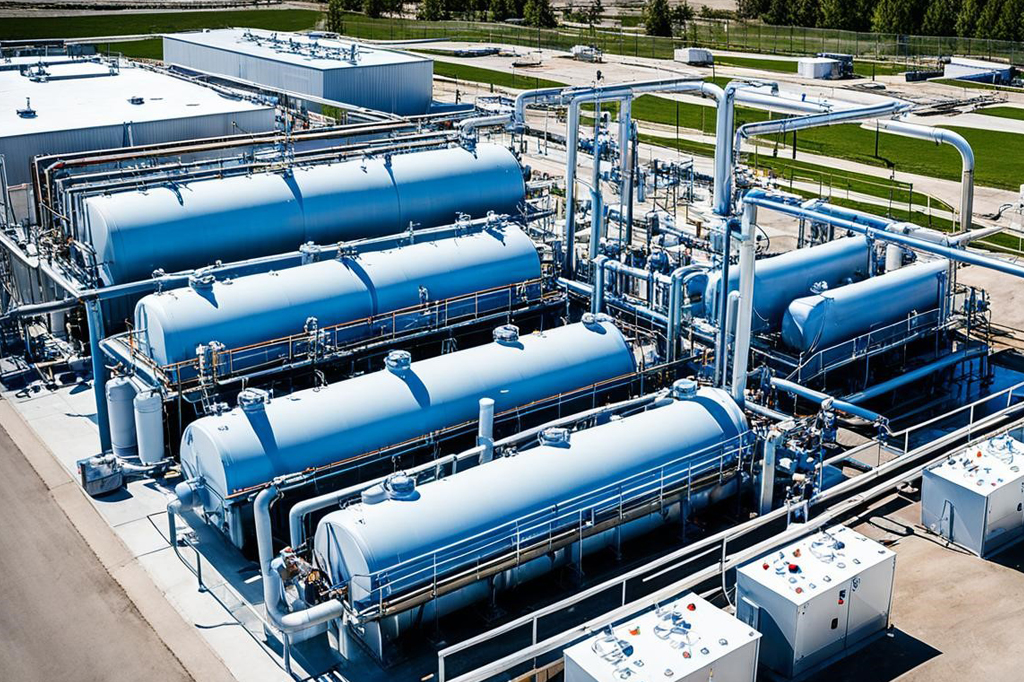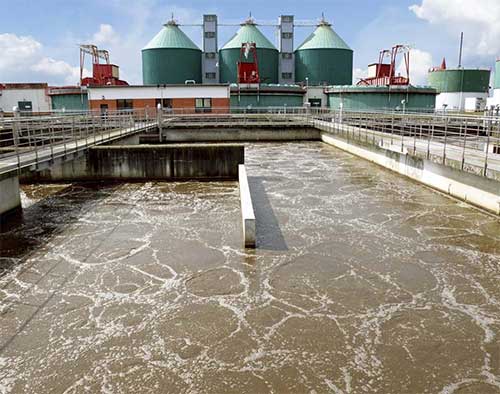Industrial Waste Water Treatment-- Sustainable Solutions for Industrial Water Administration
Industrial Waste Water Treatment-- Sustainable Solutions for Industrial Water Administration
Blog Article
Key Methods in Hazardous Waste Water Therapy Processes
The treatment of commercial wastewater is a critical element of ecological management, including an array of techniques developed to mitigate the effect of impurities. Improvements in modern technologies such as membrane layer purification and advanced oxidation procedures use ingenious solutions for boosting therapy efficacy.
Physical Therapy Methods
Just how properly can physical treatment approaches resolve the intricacies of industrial wastewater? Physical treatment methods play a crucial role in the preliminary phases of wastewater monitoring, concentrating mainly on the elimination of solids and big particulates. Methods such as sedimentation, purification, and flotation are important for decreasing the focus of suspended solids, consequently boosting the effectiveness of succeeding treatment procedures.
Sedimentation includes the gravitational settling of solids, allowing for the separation of larger materials from the wastewater. This technique is specifically reliable in clearing up water prior to chemical or biological therapies.
Additionally, flotation techniques, which use air bubbles to lift put on hold solids to the surface area for elimination, work in dealing with wastewater with high concentrations of fats, oils, and greases. On the whole, physical therapy approaches work as a vital very first step in the extensive monitoring of commercial wastewater, guaranteeing that the lots on succeeding therapy phases is minimized and enhancing general treatment efficiency.
Chemical Therapy Methods
While physical therapy methods prepared for effective wastewater management, chemical therapy strategies are vital for addressing the more intricate contaminants usually discovered in industrial effluents. These methods use various chemical agents to precipitate, counteract, or oxidize harmful compounds, making certain a more thorough removal of pollutants.
One typical method is coagulation and flocculation, where chemical coagulants such as light weight aluminum sulfate or ferric chloride are contributed to promote the gathering of suspended bits. This procedure enhances solid-liquid splitting up, reducing turbidity and enhancing water top quality. Additionally, neutralization processes are used to readjust the pH of wastewater, using bases or acids to counteract acidic or alkaline streams, respectively.
Oxidation-reduction reactions play a crucial role in degrading organic impurities and microorganisms. Chemical oxidants like hydrogen, ozone, or chlorine peroxide are utilized to damage down intricate organic compounds, making them much less harmful or more eco-friendly. Moreover, advanced oxidation procedures (AOPs) incorporate numerous oxidation strategies to enhance pollutant removal performance.
Biological Therapy Processes
The efficiency of wastewater therapy is dramatically improved by biological therapy processes, which harness the all-natural metabolic tasks of microorganisms to disintegrate raw material and eliminate toxins. Industrial Waste Water Treatment. These procedures largely include aerobic and anaerobic digestion, each tailored for particular types of wastewater
Cardio therapy procedures make use of oxygen to sustain microbial growth, promoting the malfunction of natural toxins into co2 and water. Typical methods include activated sludge systems, where oygenation containers promote the blending of wastewater with microorganisms, and dripping filters, which motivate biofilm development on media surface areas.
Alternatively, anaerobic therapy processes happen in the absence of oxygen, making use of anaerobic germs to decompose raw material, causing biogas manufacturing, a renewable resource source. Anaerobic digesters are commonly used in commercial setups for this purpose, successfully minimizing the quantity of sludge while generating beneficial biogas.
The option of a biological therapy method relies on wastewater characteristics, treatment goals, and regulative standards. The combination of biological processes in wastewater treatment not only boosts pollutant removal performance however additionally advertises sustainability by reducing chemical use and sustaining resource recovery.
Advanced Oxidation Processes

Common AOP techniques include Fenton's ozonation, reagent, and photocatalysis. Fenton's reagent, a combination of hydrogen peroxide and ferrous iron, militarizes the formation of hydroxyl radicals, making it reliable for treating wastewater consisting of phenolic compounds and various other stubborn substances. Ozonation utilizes ozone as a powerful oxidant, qualified of degrading a wide variety of natural contaminants while all at once decontaminating the effluent. Photocatalysis uses light-activated drivers, such as titanium dioxide, to improve oxidation reactions and get rid of pollutants.
AOPs offer several benefits, including minimized sludge manufacturing and the ability to treat wastewater with high focus of natural pollutants. However, the implementation of AOPs requires mindful consideration of functional parameters and cost-effectiveness, making sure that these sophisticated strategies are suitably incorporated right into existing wastewater therapy systems.
Membrane Layer Filtration Technologies

Microfiltration works for eliminating suspended germs and solids, while ultrafiltration targets smaller sized natural molecules and infections. check Nanofiltration links the void in between ultrafiltration and turn around osmosis, properly eliminating natural substances and divalent ions. Reverse osmosis supplies the greatest degree of filtration, made use of mainly for desalination and eliminating mono-valent ions.
Membrane technologies offer various advantages, including low power intake contrasted to typical therapy methods, modular style for scalability, and the possibility for water recuperation and reuse. However, difficulties such as membrane fouling and the requirement for regular maintenance must be addressed to ensure system efficacy. Overall, membrane layer filtering innovations stand for an important part of contemporary industrial wastewater therapy techniques, advertising sustainability and resource preservation in water monitoring.
Verdict
In verdict, commercial wastewater therapy uses a varied array of methods, consisting of physical, look at here chemical, organic, and advanced approaches. Proceeded improvements in these approaches will additionally enhance the performance and performance of wastewater therapy procedures in commercial setups.
The therapy of commercial wastewater is a crucial element of ecological administration, involving an array of strategies made to minimize the effect of pollutants.Exactly how effectively can physical therapy methods address the complexities of commercial wastewater?Advanced oxidation procedures (AOPs) stand for a sophisticated strategy in commercial wastewater treatment, designed to properly deteriorate natural contaminants that are commonly immune to conventional therapy techniques (Industrial Waste Water Treatment).In final thought, commercial wastewater treatment uses a varied selection of techniques, consisting of physical, chemical, biological, and advanced methods. Continued improvements in these methods will further enhance the effectiveness and effectiveness of wastewater look at these guys therapy procedures in industrial setups
Report this page